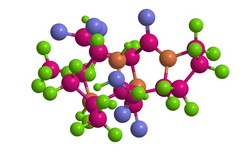Large-scale, label-free peptide detection
Proteins consist of 20 different amino acids, which can be combined to give between a dozen to several thousand amino acids. Proteins can be divided into shorter fragments called peptides, typically consisting of around 15-20 amino acids. Peptides have emerged as a vital tool for discovering function and interactions of proteins. Researchers have now developed a 1x2 cm peptide chip capable of presenting up to 2 million different peptides. This has allowed them to study entire proteomes from man or from pathogens, depending on the application. The aim of the EU-funded HIPAD(opens in new window) (High-density peptide microarrays and high-throughput, label-free detection of peptides, modifications and interactions) project was to extend the limits of proteomics by developing and improving different but complementary new label free detection platforms integrated with high density peptide microarrays. This enabled the sensitive, high resolution determination of the identity, quality and modification of individual members of a peptide microarray. Thereby permitting the real-time monitoring of any interacting molecular receptors. Researchers incorporated a peptide chip into label-free protein-detection technologies such as matrix-assisted laser desorption / ionisation (MALDI) imaging, surface plasmon resonance imaging (SPRI) and metal-oxide semiconductor field-effect transistors. Project partners also used mass spectrometric analysis of peptides on high-density peptide chips to identify native and oxidised peptides and developed methods for the automated bioinformatics analysis of high-density peptide array data. Entire proteomes such as the human herpesvirus-5 were successfully represented on a single chip, enabling the identification of B cell epitopes from human sera. Major histocompatibility complex (MHC) class I and II molecules, which are involved in immune-specific responses to viral attack, were also identified. Nano-structured gold-surface chips were manufactured to produce high-density peptide arrays on nanoplasmonic surfaces in SPRI technology. Scientists successfully obtained proof-of-concept for SPRI analysis of peptides involved in MHC class II interactions. 3D hydrogel networks compatible with MALDI imaging were also developed. These highly successful outcomes led to the filing of two patents by SMEs and the commercialisation of high-density peptide arrays by one of the participating SMEs. HIPAD will enable an unprecedented level of high-throughput proteomics through the development of cost-effective innovative platforms. This could lead to applications in the scientific, pharmaceutical, medical, food, environmental and life science industries.







